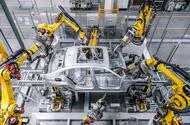Why Is Steel Still the Backbone of Car Manufacturing?
If you’ve ever wondered why steel remains the go-to material for building cars—even as buzzier materials like aluminum and carbon fiber grab headlines—you’re not alone. Steel’s been the backbone of the auto industry for more than a century, and despite all the innovation, it’s not going anywhere soon. Let’s dig into why that is, what’s changing, and how steel is keeping pace with the future of mobility.
What Makes Steel So Essential in Modern Cars?
Think back to the Ford Model T. That car didn’t just put America on wheels—it also cemented steel’s place in automotive history. Fast-forward to today, and steel is still everywhere, from the chassis to the crumple zones. But why?
First, steel’s combination of strength, affordability, and workability is tough to beat. It’s not just about being strong—modern steels are engineered to absorb impact in a crash, keeping passengers safer. And as electric vehicles (EVs) get heavier thanks to big battery packs, the need for materials that can handle the extra weight without ballooning costs is more important than ever.
Here’s something you might not know: the steel used in cars today is a far cry from what was around even 30 years ago. Back then, the most common automotive steels had a strength of about 300 megapascals (MPa). Now? Some parts use steels rated at 1900 MPa. That’s a sixfold leap, and it means carmakers can use thinner, lighter pieces without sacrificing safety.
How Is Steel Evolving to Meet New Automotive Demands?
The auto industry isn’t standing still, and neither is steel. Organizations like World Auto Steel—representing 18 major global steel producers—are pushing the boundaries, working to make steel not just stronger, but smarter and more sustainable.
One standout example is the Steel E-Motive project, a collaboration with engineering consultancy Ricardo. The idea: use advanced, ultra-high-tensile steels to build lighter, safer vehicles for ride-sharing and future mobility. By carefully matching different grades of steel to specific parts of a car, manufacturers can optimize for strength, weight, and cost—all at once.
It’s not just theory, either. Automakers worldwide are taking notice. According to George Coates, technical director at World Auto Steel, the feedback from car companies has been overwhelmingly positive. The ability to fine-tune steel’s properties for each component is something few other materials can match.
Is Steel Really That Sustainable? What About Recycling?
Let’s talk recyclability, because it’s a big deal. Steel is one of the most recycled materials on the planet. When a car reaches the end of its life, almost all of its steel can be melted down and reused. In fact, the loss rate during recycling is just 4-5%, according to World Auto Steel’s Russ Balzer. That’s incredibly efficient compared to many other materials.
And it’s not just about melting down old cars. The steel industry has invested heavily in processes like galvanizing (to prevent rust) and aluminizing (adding a protective aluminum layer), making today’s steel components more durable and longer-lasting.
But there’s more. As the world pushes for lower carbon emissions, the way steel is made is changing, too. Enter the electric arc furnace—a method that can produce new steel using up to 100% recycled scrap, compared to about 30% with traditional blast furnaces. This shift could dramatically cut the carbon footprint of car manufacturing.
How Does Steel Stack Up Against Aluminum and Carbon Fiber?
It’s true—aluminum and carbon fiber are lighter than steel. That’s why you see them in high-end sports cars and luxury EVs. But they come with trade-offs: higher costs, more complex manufacturing, and, in some cases, lower recyclability.
For most mainstream cars, steel still offers the best balance of safety, performance, and price. And with the rise of advanced high-strength steels, the weight gap is narrowing. Plus, as battery technology improves and costs drop, the pressure to shave every last kilogram from EVs isn’t as intense as it once was. Instead, the focus is shifting to crash safety and battery protection—areas where steel’s strength and energy absorption are hard to match.
What’s Next for Steel in the Age of Electric and Autonomous Cars?
The future of steel in cars isn’t just about making it stronger or lighter—it’s about making it cleaner. Nick Silk, who leads product management at Tata Steel UK, describes the process as a “dance” between steelmakers and automakers. Both sides need to coordinate: car companies want to know how green their steel will be, and steelmakers need to plan for the shift to electric arc furnaces and higher-quality scrap.
One big opportunity? Closing the loop on scrap. The UK, for example, generates nearly seven million tonnes of steel scrap each year, most of which gets exported. By improving scrap quality (think: better sorting, removing copper wiring before shredding), more of that material could be reused domestically, slashing the need for new steel and reducing emissions.
What Does This Mean for Drivers and Car Buyers?
So, what’s in it for you? For starters, cars built with advanced steels are safer, more durable, and increasingly eco-friendly. As manufacturers adopt greener steelmaking methods, the environmental impact of your next car could be significantly lower—even if it’s not an EV.
And don’t expect steel to disappear from the automotive landscape anytime soon. Its unique blend of strength, versatility, and recyclability means it’s likely to remain the industry’s material of choice for decades to come.
The Bottom Line: Steel’s Not Going Anywhere
Despite all the hype around new materials, steel’s story in the auto world is far from over. If anything, it’s entering a new chapter—one defined by innovation, sustainability, and adaptability. Whether you’re a car enthusiast, an EV convert, or just someone who wants a safe, reliable ride, steel’s quiet evolution is shaping the vehicles of tomorrow in ways you might not have realized. And that’s something worth keeping an eye on.

